Hidden In Plain Sight
An online art exhibition considering the art in everyday objects.
In association with Durham University's Student Art Prize 2021/22
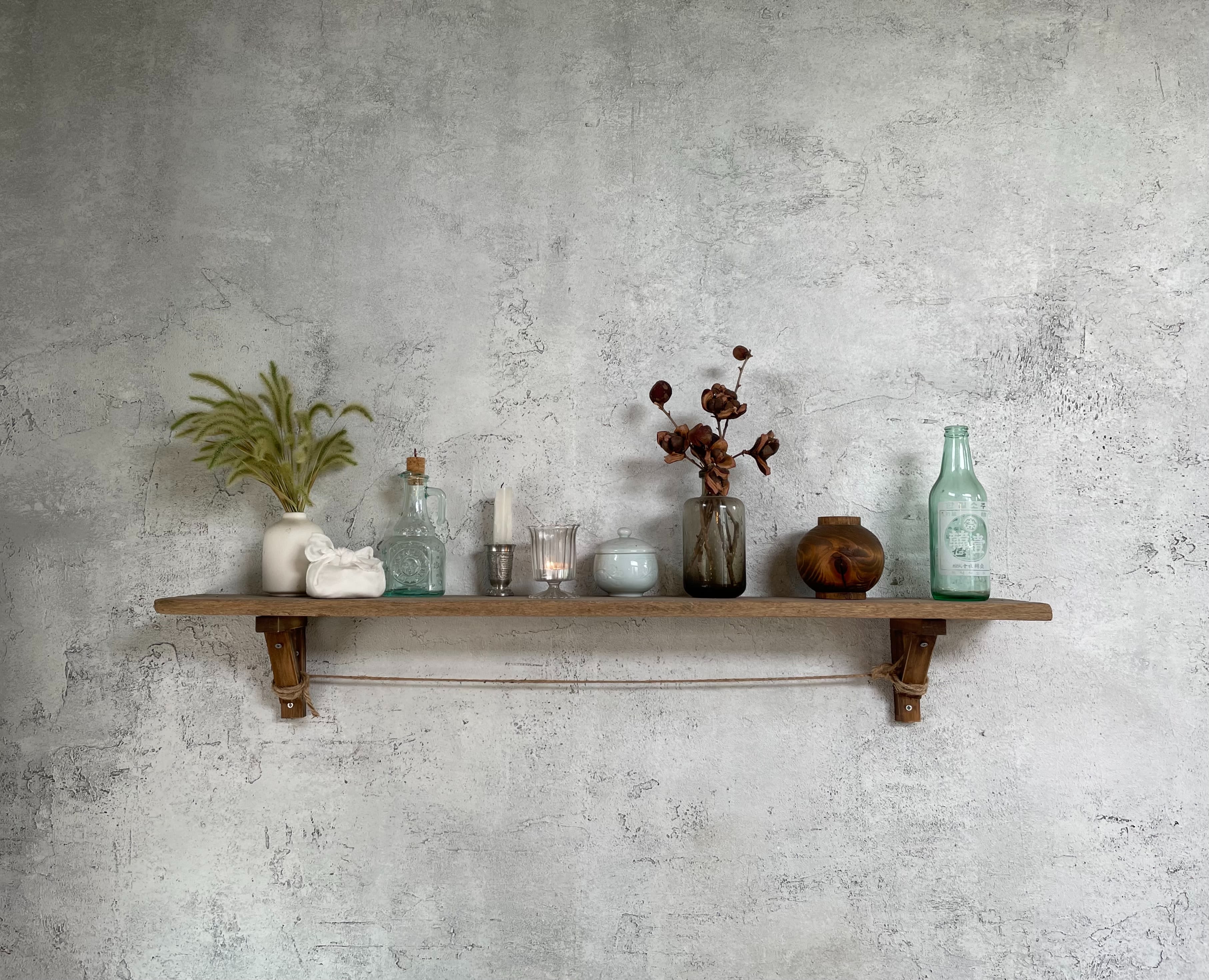
This exhibition was curated by myself, Alice Pappon, an undergraduate Liberal Arts student at Durham University. As part of my placement with the Durham University's Western Art Collection, I wanted to create my own project that was inspired by this year's Student Art Prize theme 'Hidden'. The aim of this exhibition is to encourage viewers to reflect on the artistic forms that may be hidden in plain sight, as suggested by the title, and to highlight the artistic value of everyday objects.
It is easy to appreciate something as art when it is hung on a gallery wall or placed under a spotlight in a museum. However, there are many art forms and artworks that are not put on display, but rather surround us and help curate beauty into our day-to-day lives.
This exhibition will firstly introduce three objects from Durham University's Oriental Museum. Each object reveals artistic conventions in it's history and fabrication. These are followed by objects of my own that I have been inspired to 'see afresh' and recognise their artistic values.
As you scroll through, I encourage you to reflect on objects and aspects of your daily life that could be recognized as art.
"I believe we have to put art back at the centre of everyday life rather than allowing it to become a specialist activity at the margins of society." Martin Firrell
Onggi Jar
(DUROM.1991.108.1)
These earthenware jars play an important role within Korean culture. Onggi ware was used for storing fermented foods such as Kimchi, soy sauce and rice wine. With such foods being stapes of the Korean diet, this pottery piece was essential for a traditional household, no matter the socioeconomic status. Onggi literally translates to 'jar-vessel', and are made with regional clay (Onggi clay). Their origins date back to the Neolithic age; a simple vessel like this would have been used to store grains and seeds. With time and the development of ceramic techniques, the vessel took on different shapes and forms, eventually evolving into the popular Onggi jar that we see featured here.
Needing to store large quantities, Onggi jars are often found in large sizes. To achieve this, potters typically use the coil technique of building up the walls of the vessel section by section. Special tools (dogae and surae) made from pine trees are then used to pound the clay into shape. Mastering the technique to create Onggi pots take years. Modern-day Onggi potters are determined to keep their artistry alive.
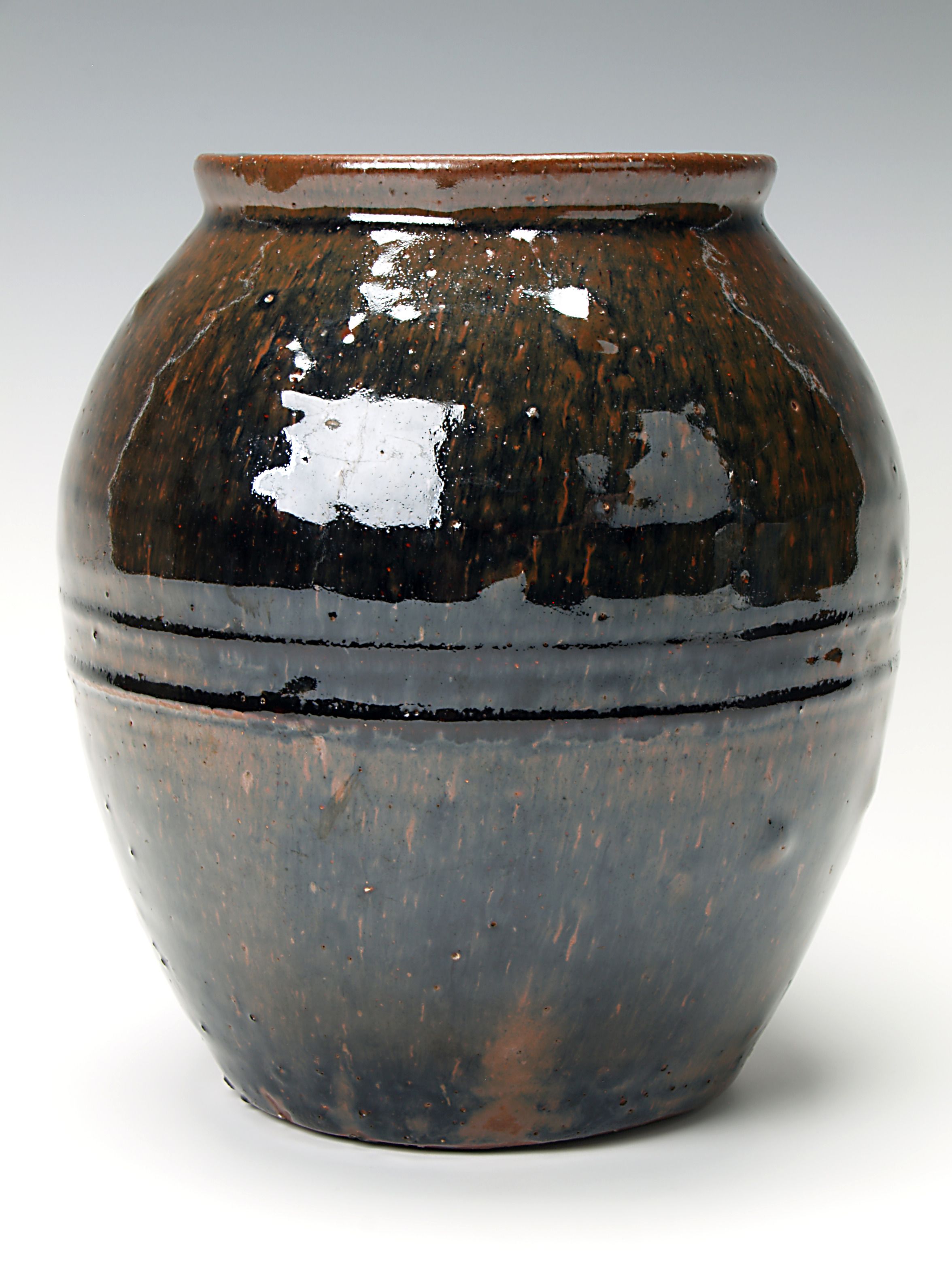
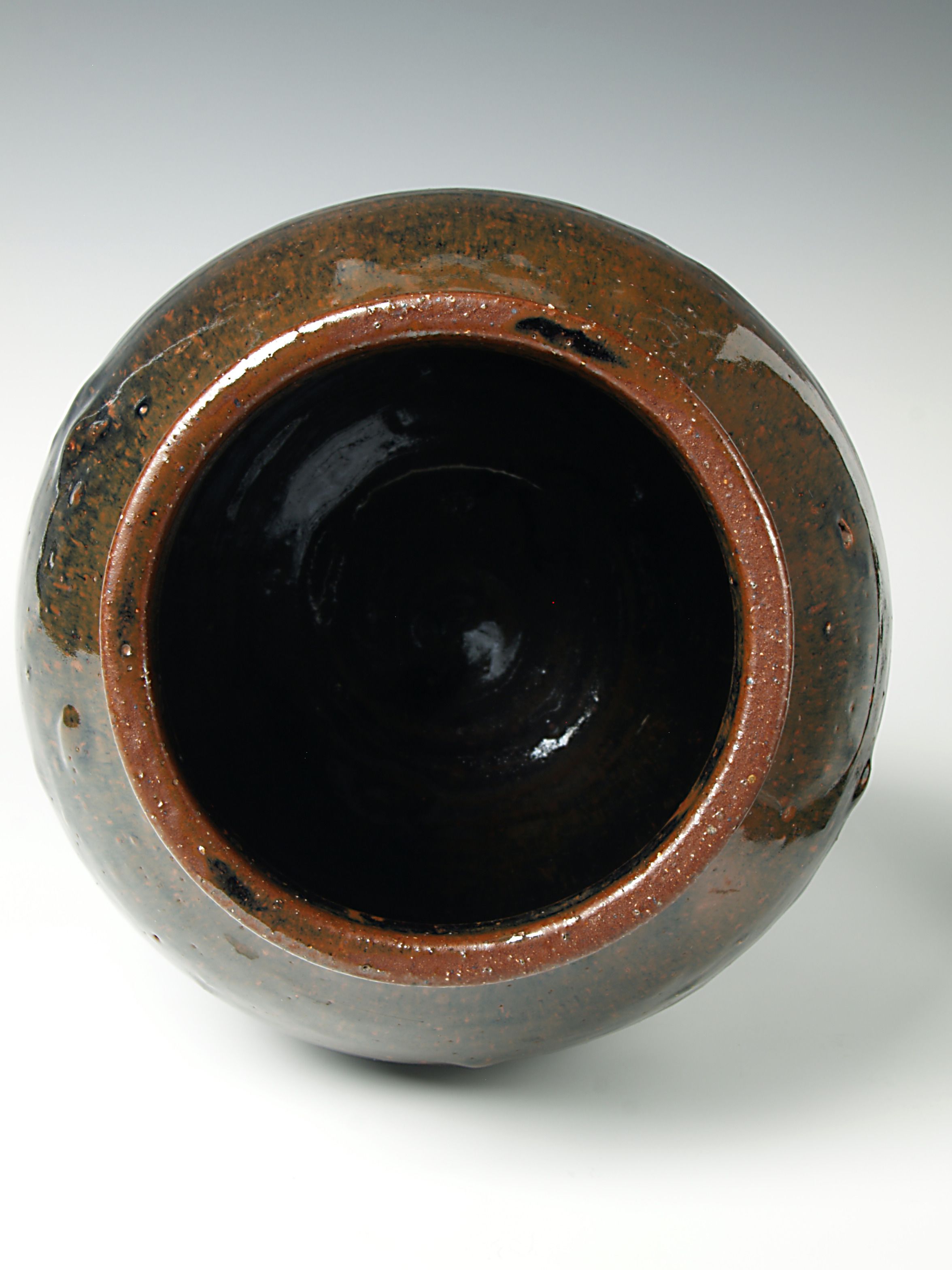
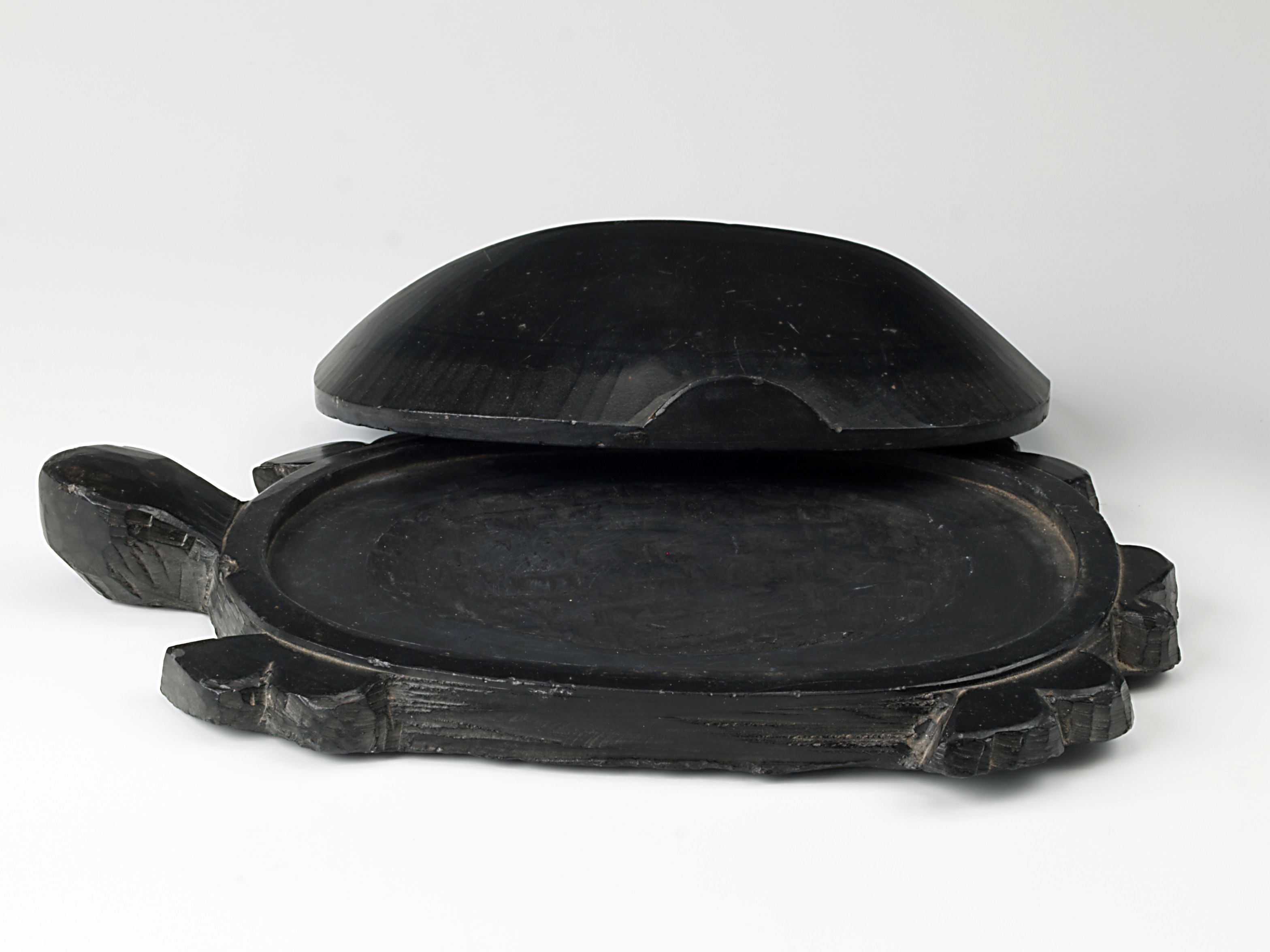
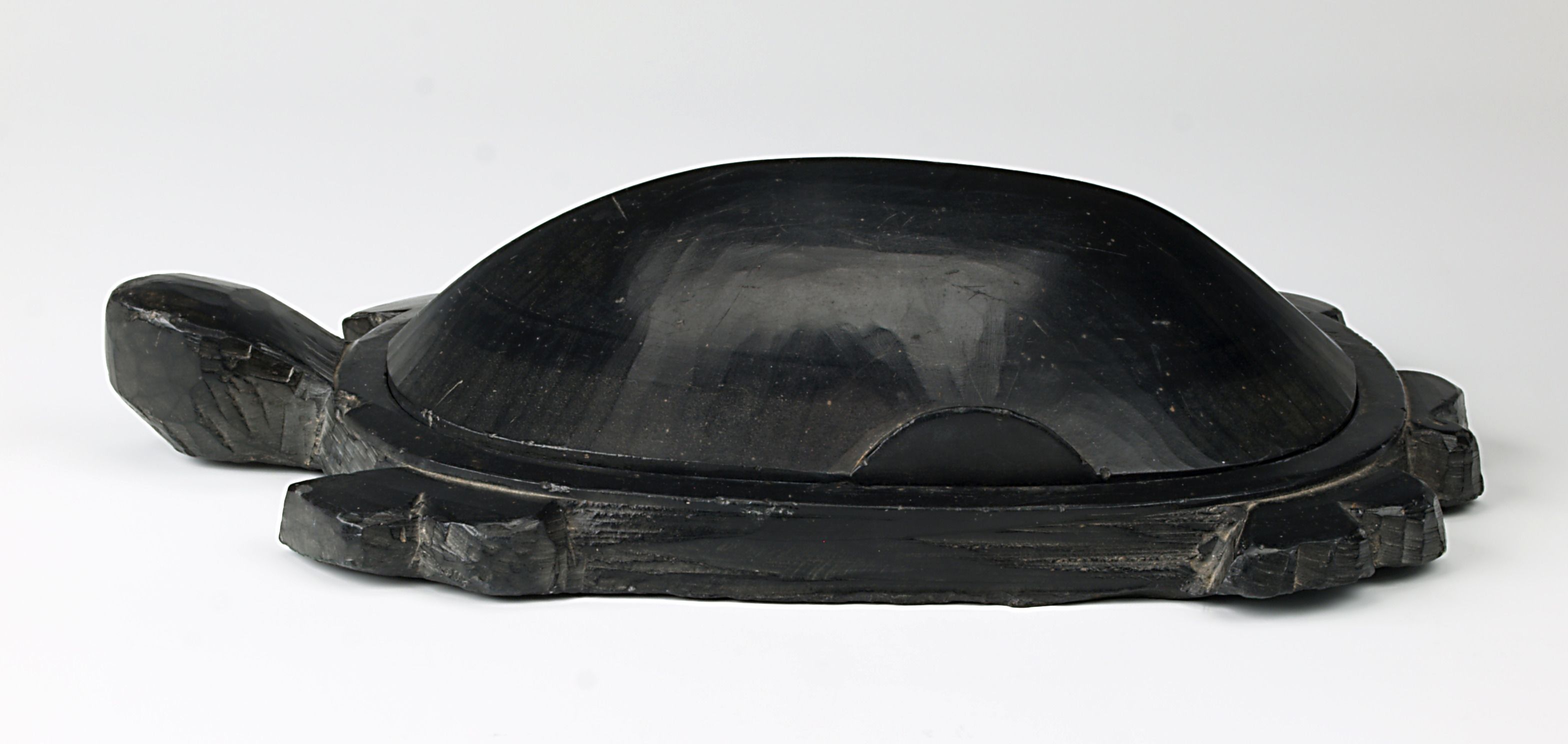
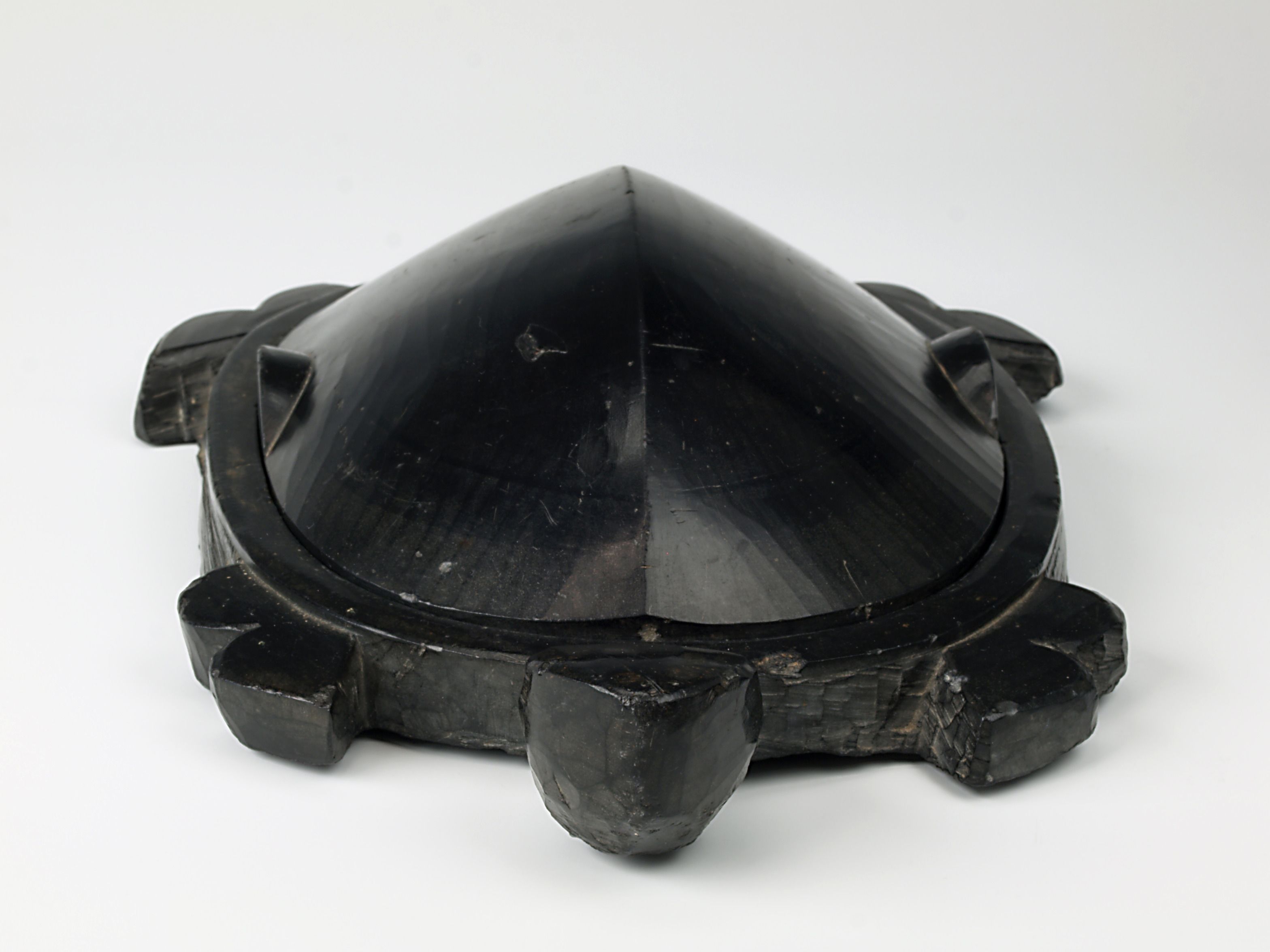
Inkstone
(DUROM.1991.135.a-b)
Inkstones have both practical and decorative usages. Along with a brush, ink stick, and paper, inkstones form part of a traditional calligraphy set. Although it originated in China, this calligraphy set became prominent within many East Asian cultures. This is a Korean inkstone carved in the shape of a turtle. Because of their long lifespan, turtles became symbols of longevity. Thus, the turtle-shaped object is a suggestion of longevity for its owner's life.
In ancient China, the appreciation of beauty in the otherwise practical object led to more elaborate and decorative designs. Beautifully carved and inscribed inkstones made by famous artists were often presented as tribute or gifts from one ruler to another.
Four Treasures of The Study
Including the inkstone and paper, there are four main components to the traditional Korean and Chinese calligraphy set. This set would have been typically used by
As you scroll, discover the artistic techniques that go toward creating each piece. Even the task of sitting down to write can be transformed into a celebration of art...
Brushes
The best calligraphy brushes are often made by hand, hairs are individually levelled, sized, binded and finally attached to a bamboo handle. It takes around 40 to 50 steps to make a high quality brush.
Most commonly used for the brush is white goat hair, but can also be made from human baby hair.
Inksticks like this are a type of solid Chinese ink. It would have been used especially for formal writing and brush painting.
Inksticks are predominantly made up of soot and animal glue, sometimes scented with essential oils or incense.
These are decorated with symbols and texts that allude to the owner's status.
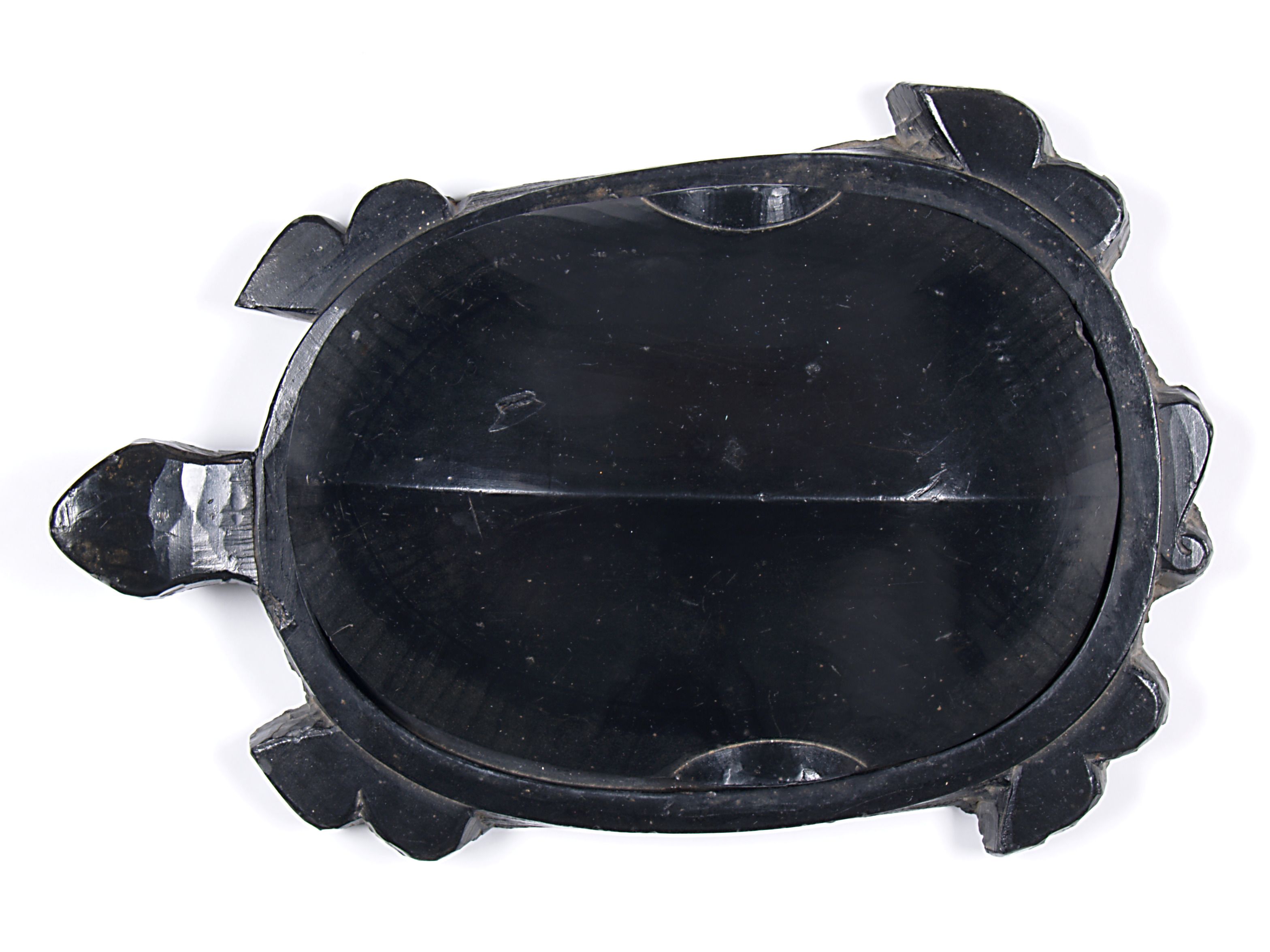





Wooden Book cover
(DUROM.2018.8)
This is a wooden carved book cover. It is said to originate from India but shares a resemblance with Tibetan book covers that are often made from carved wood.
For Tibetan Buddhists, books are cherished and handled with respect. A book's ability to record teachings and transform lives makes it a divine presence within Buddhism. The wooden cover allows for better preservation of books, enabling their content to be shared and passed down from generations.
The artistry of this book cover not only makes for a pretty display but signifies the worth of the book itself. It may also be used as a form of illustration, carved images may correlate to the themes of the book - much like we see on book covers today.
Word carving is significant in many regions of India. This classic art has been passed down through generations of craftsmen. Such woodwork began as a palace and temple craft, with highly decorated wooden furniture and panels resembling wealth and status. Over time, the craft evolved to include artefacts of daily use.


In looking at these objects, I was made to think of my own belongings and the art that surrounded my everyday. It is easy to overlook the artistic nature of something that you use every day. Without the setting of a museum or gallery wall, it may be difficult to appreciate the hard work and design techniques that went into making these objects. We are surrounded by art, but it may be hidden in plain sight.
I would like to introduce two of my own objects that exemplify art that may be overlooked in its everyday use. What examples of art hidden in plain sight are there for you?
This is a Romanian tea cup, gifted to me by a friend. I have always admired the beauty of the piece, the bold colours and shapes that demand attention. But the how and why behind this cup was an art form unknown to me.
This pottery style comes from the town of Horezu, in Romania. The fabrication process for these are generally divided by gender: Men extract and form the clay while women take on the decoration and painting aspect. This process requires very specific techniques and craftsmanship
Horezu artisans use a simple cow’s horn with goose heather on top to trace fine lines. The pigments used are created with natural ingredients and follow a strict traditional recipe.
Most of the patterns are closely related to Christianity which is why symbols like flowers, herbs and the famous Horezu rooster are most frequent. They mostly symbolize good luck and prosperity, as well as other charms.
Here is a video on what the decoration process looks like:
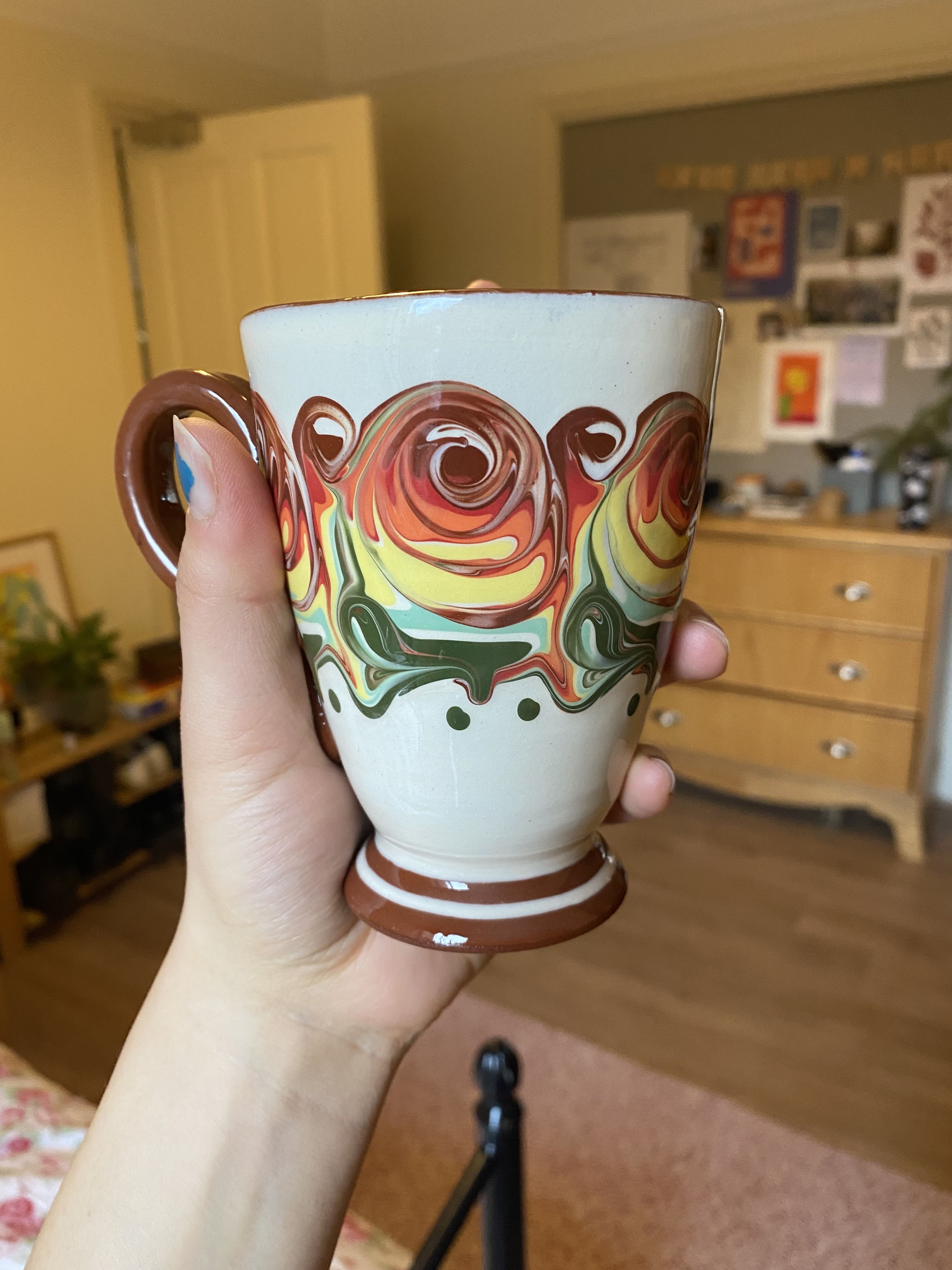
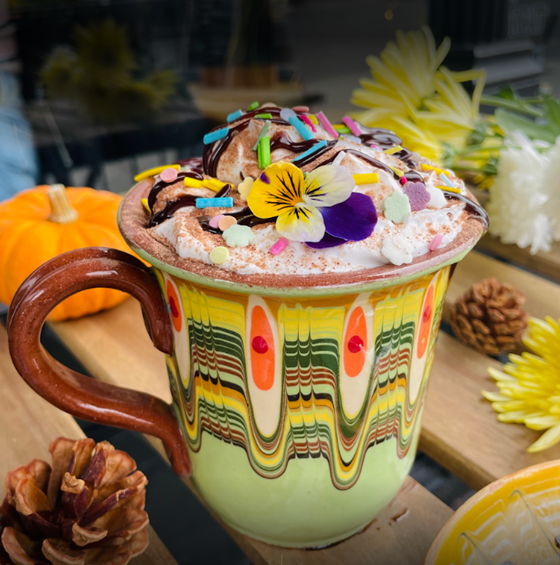
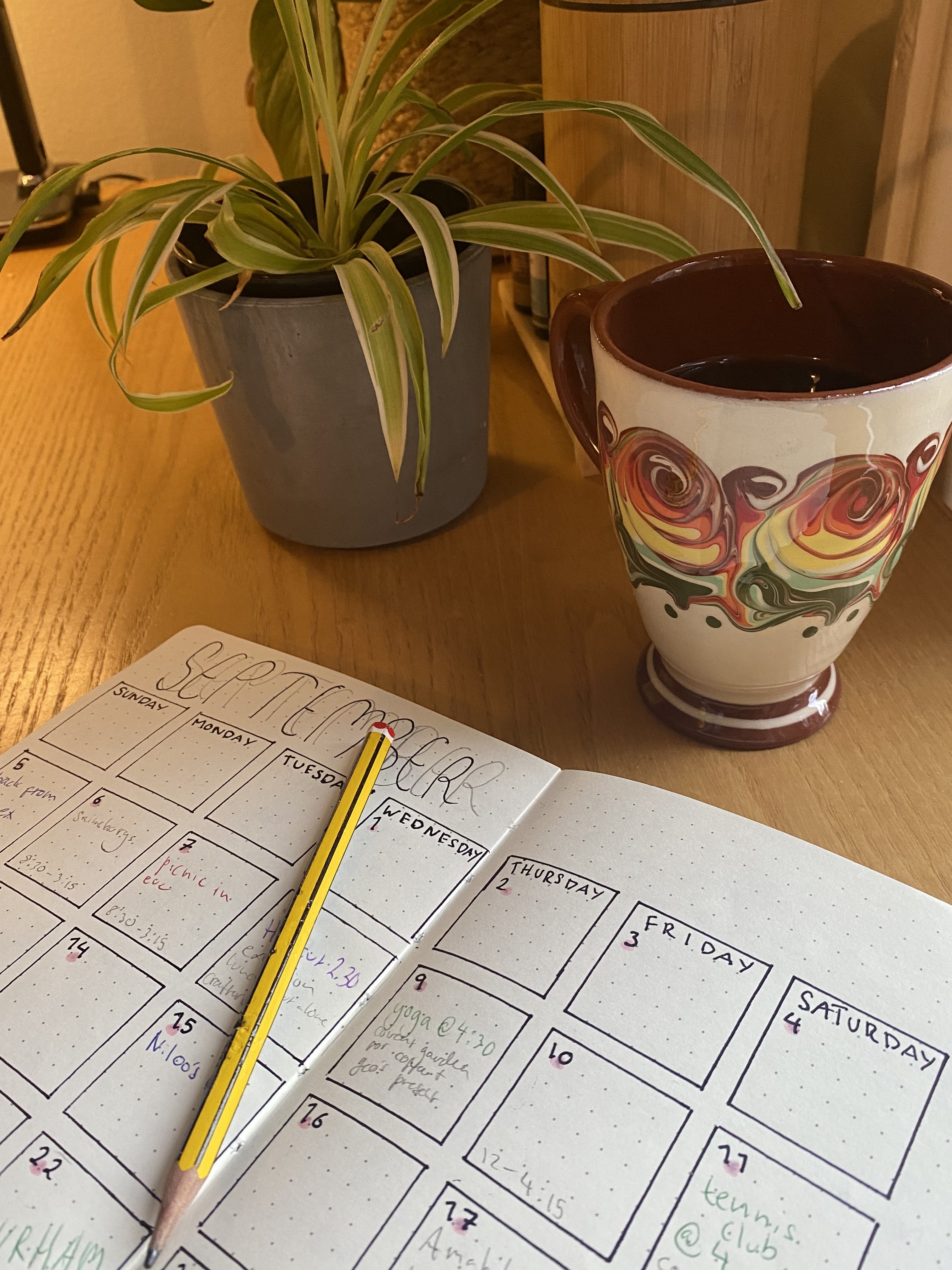
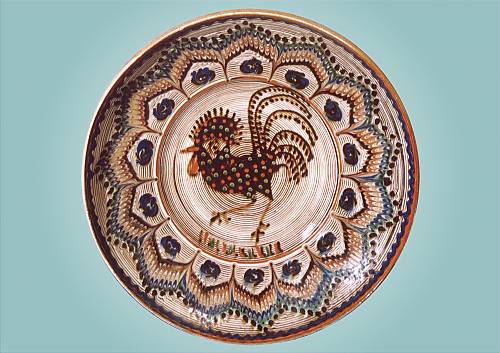
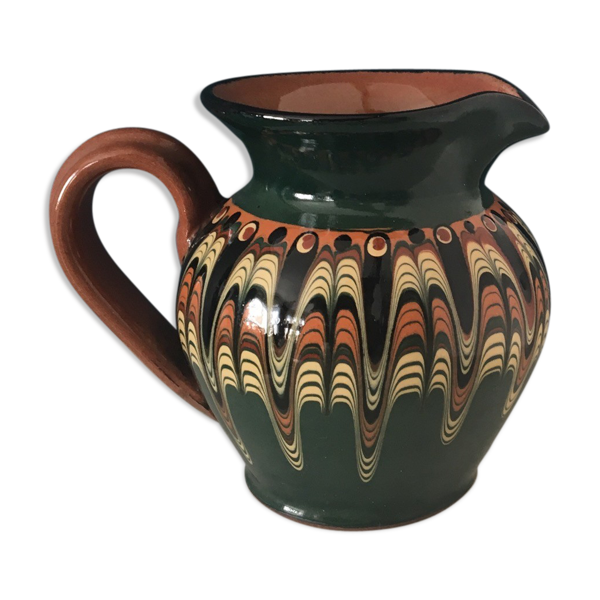
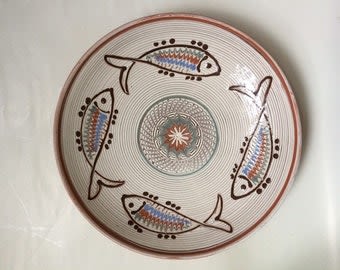
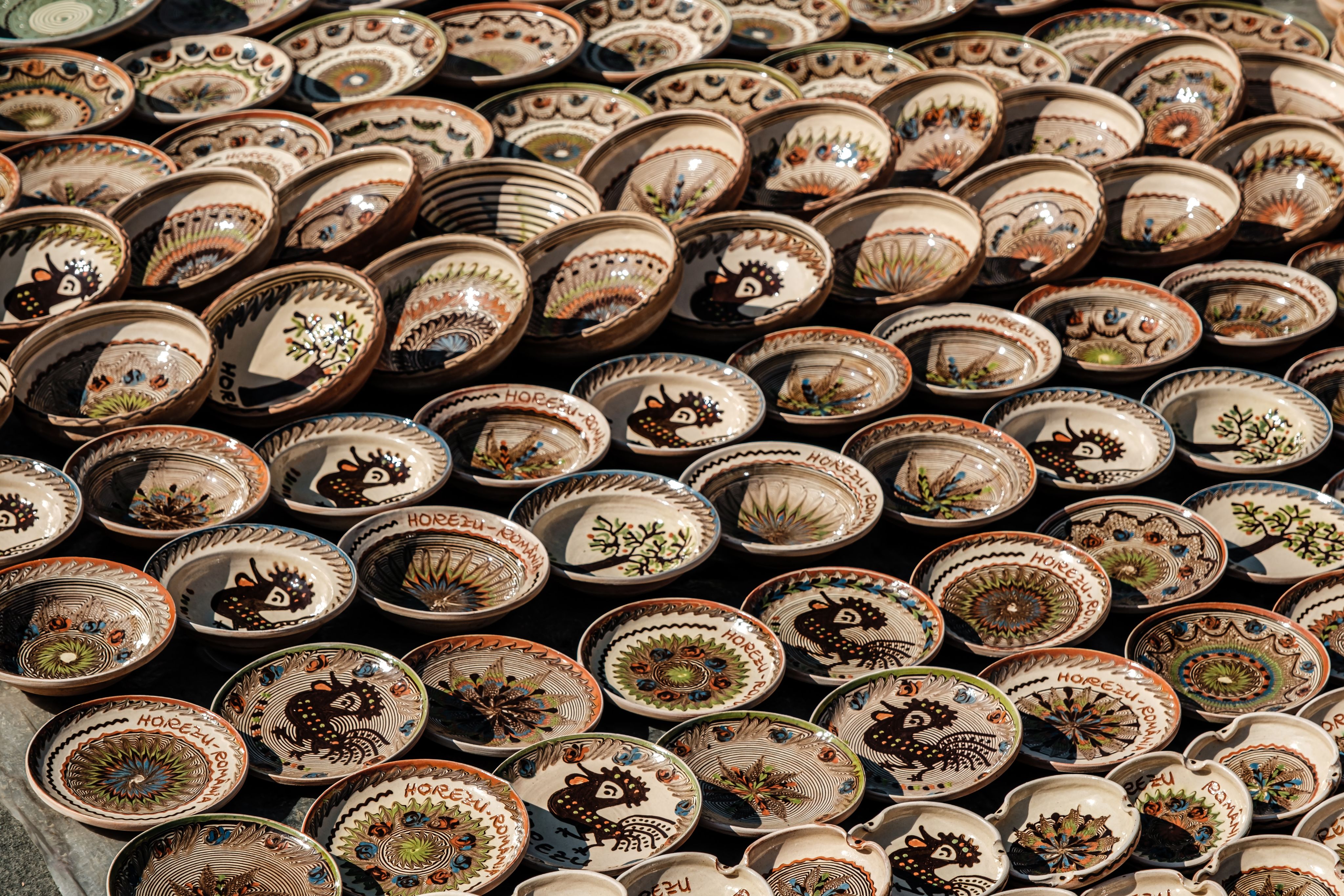
Anel de Coco - Coconut Ring

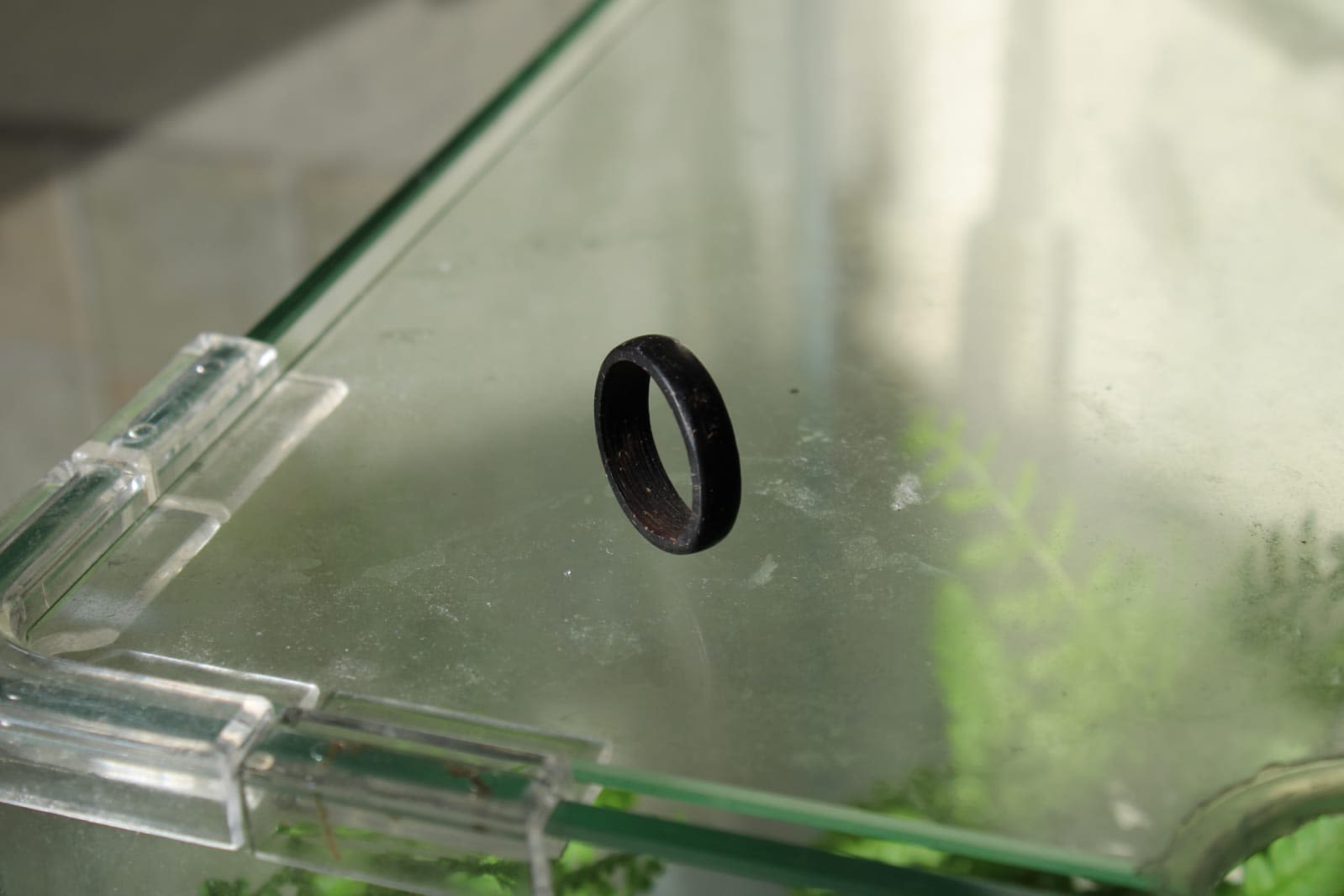
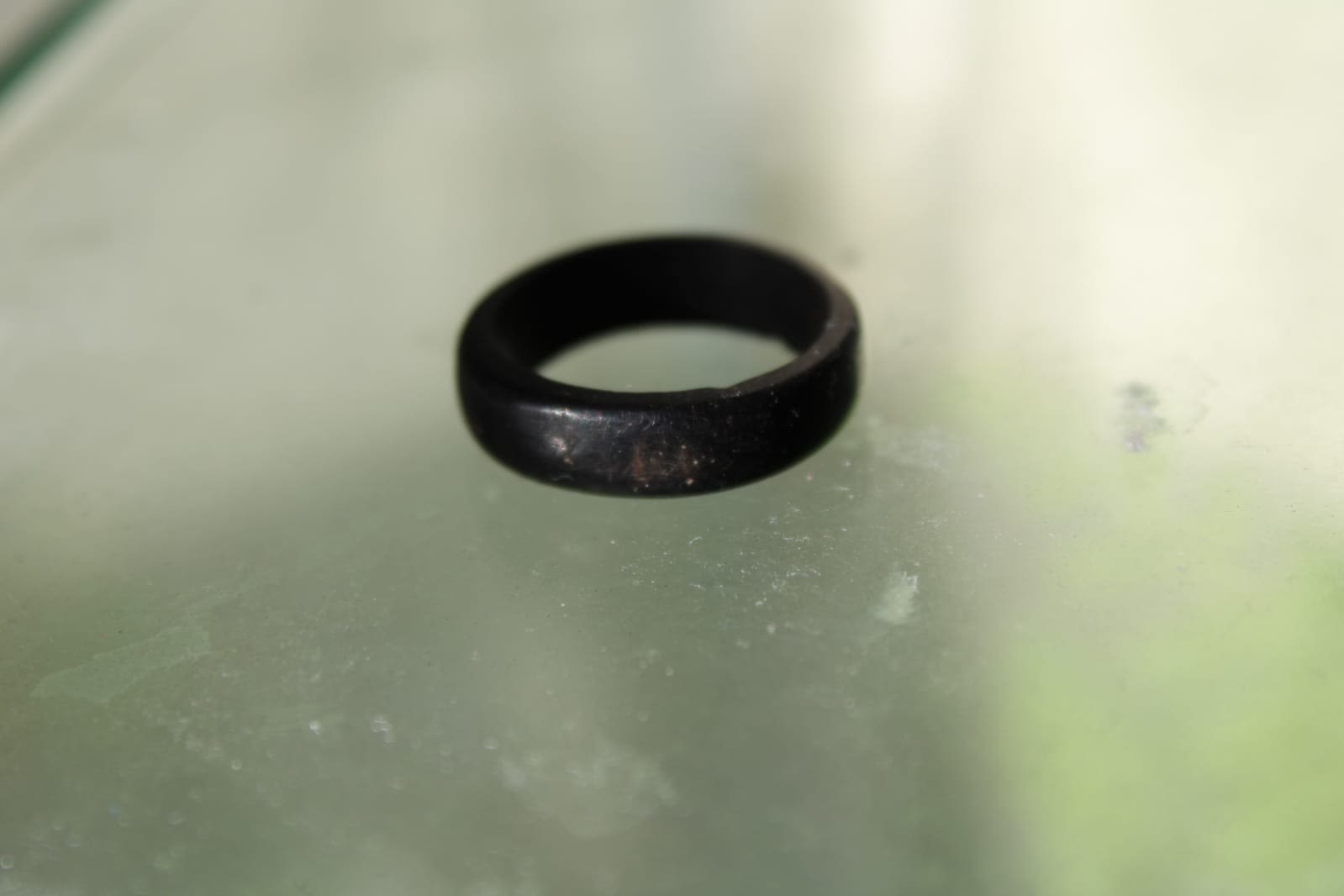
This is a coconut ring purchased from Brazil. These rings can be found in many artisanal stalls in Brazil. They are made from the seed of tucum, a palm tree native to the Amazon rainforest. Not only is this a sleek and sustainable jewellery piece, but it also holds a rich history.
The ring came about during the Brazilian Empire in the 19th century and was the Afro-Brazilian slaves alternative to expensive metal jewellery not readily available to them. The ring became an important symbol of marriage, friendship and their struggle for liberation.
The video below is a demonstration of how the coconut ring is made. It is important to note that at the time of its origin, electric tools would not have been used. Thus, the process would have been much longer and laborious.
As can be seen from the video, sculpting the coconut ring is not a quick and easy task. Time and effort is employed to pick, hollow, and carve the seeds into the desired shape. To the Afro-Brazilians slaves, this artistic endeavour provided a sense of liberation. The ability to create art with the materials available enabled a projection of their cultural identity.
Rings are not the only jewellery pieces made from tucum. It is also used to make keyrings, earrings and other small trinkets. The use of tucum is combined with other art forms such as paintings to create individual artistic pieces.
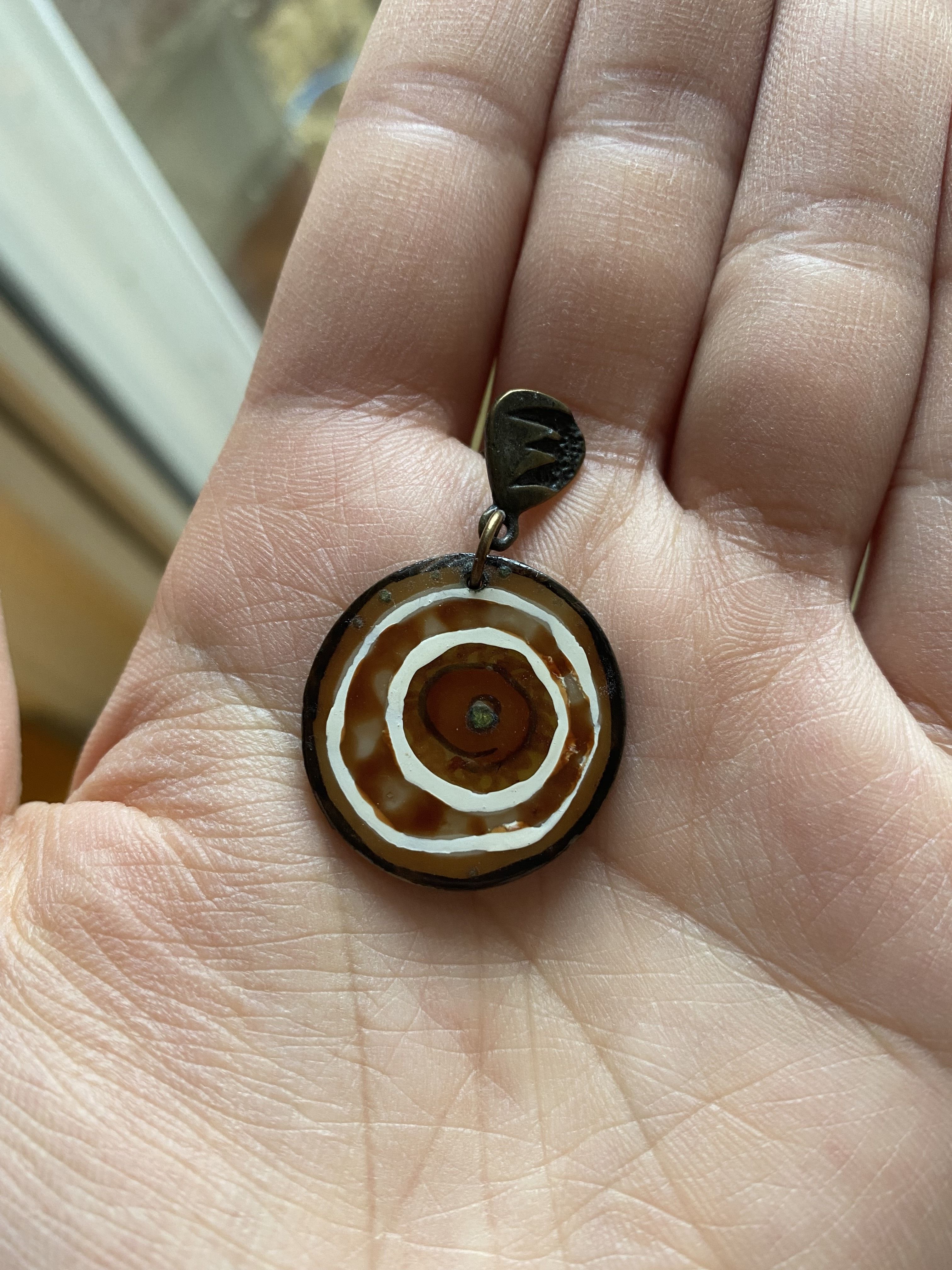
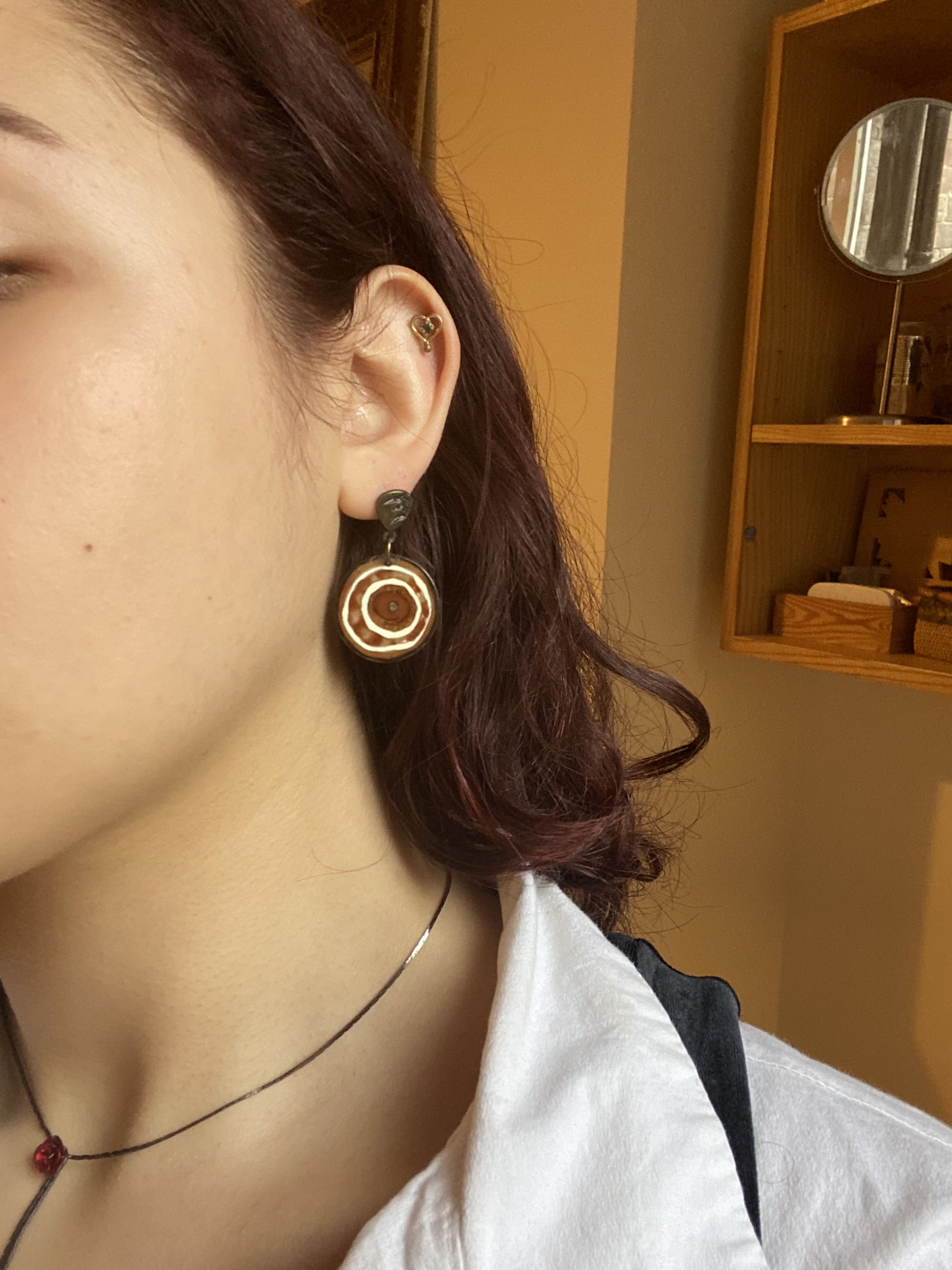

Hidden in Plain Sight
I hope that this exhibition space has inspired you to see the various forms of art that surround our everyday lives. By promoting artworks outside of professional institutions we help diversify the definition of art and our cultural understanding of how different art forms evolve around the world.
Why not submit your own 'hidden' object by emailing artcollection@durham.ac.uk. Send in a picture of your object along with a brief description of it and the artistic value you believe it holds. Submissions will be compiled and presented on the SitC website as a supplementary image gallery. With this, we hope to expand the range of objects and cultures discussed within this exhibition.
Thank you for visiting this space and be sure to keep up to date with further exhibitions, events and talks launched by the Art School.
Many thanks to Alix Collingwood-Swinburn and Emily Dowler for making this exhibition possible.
